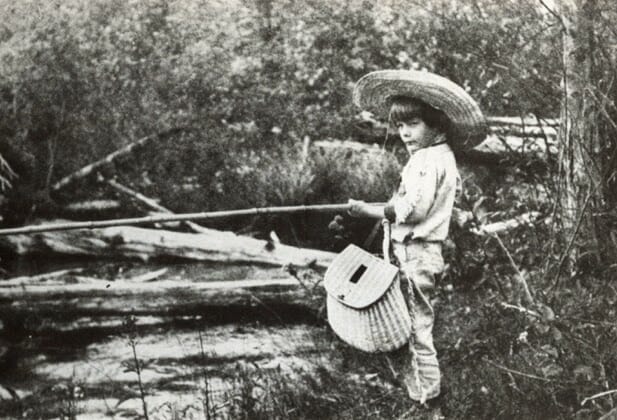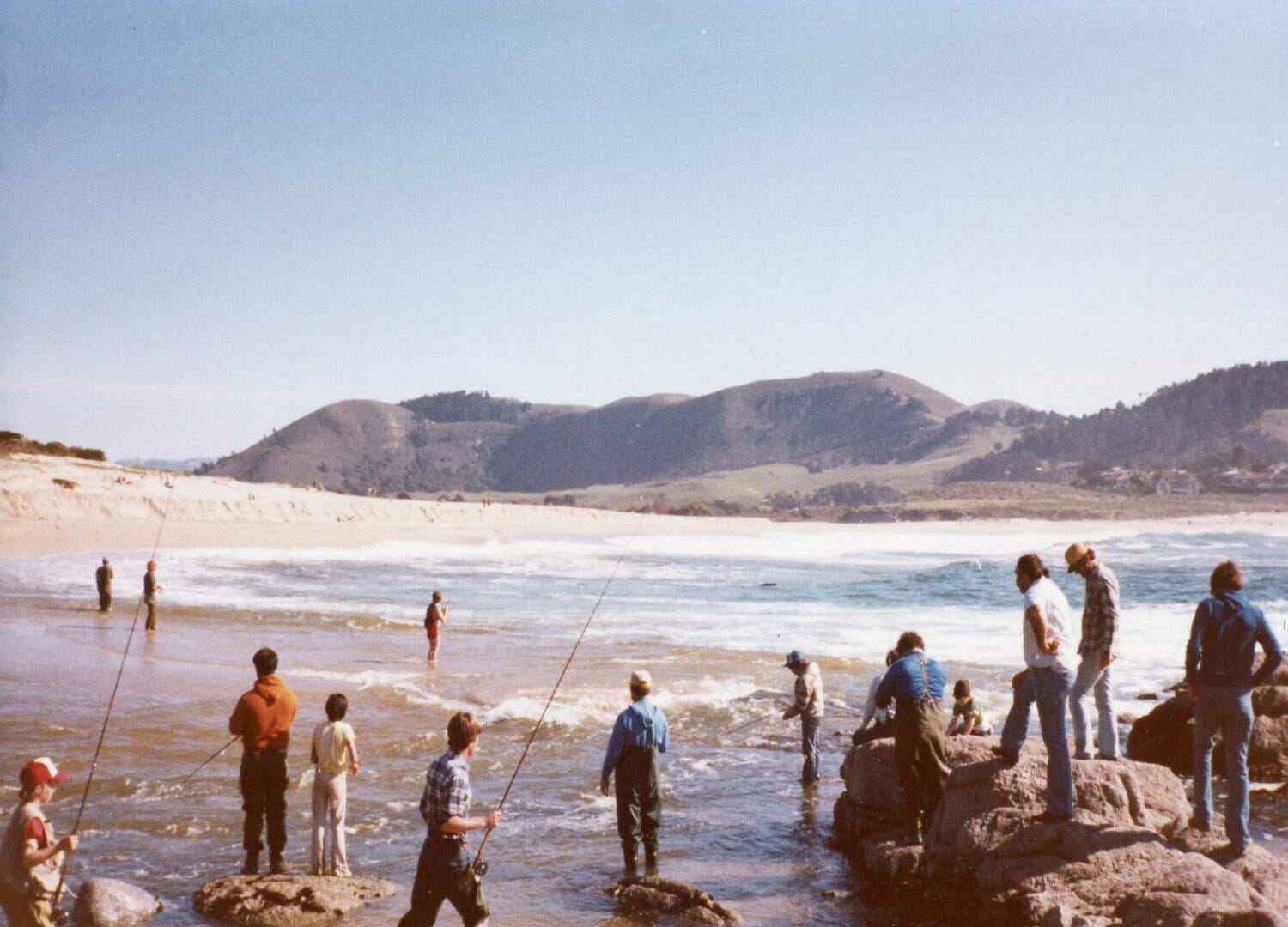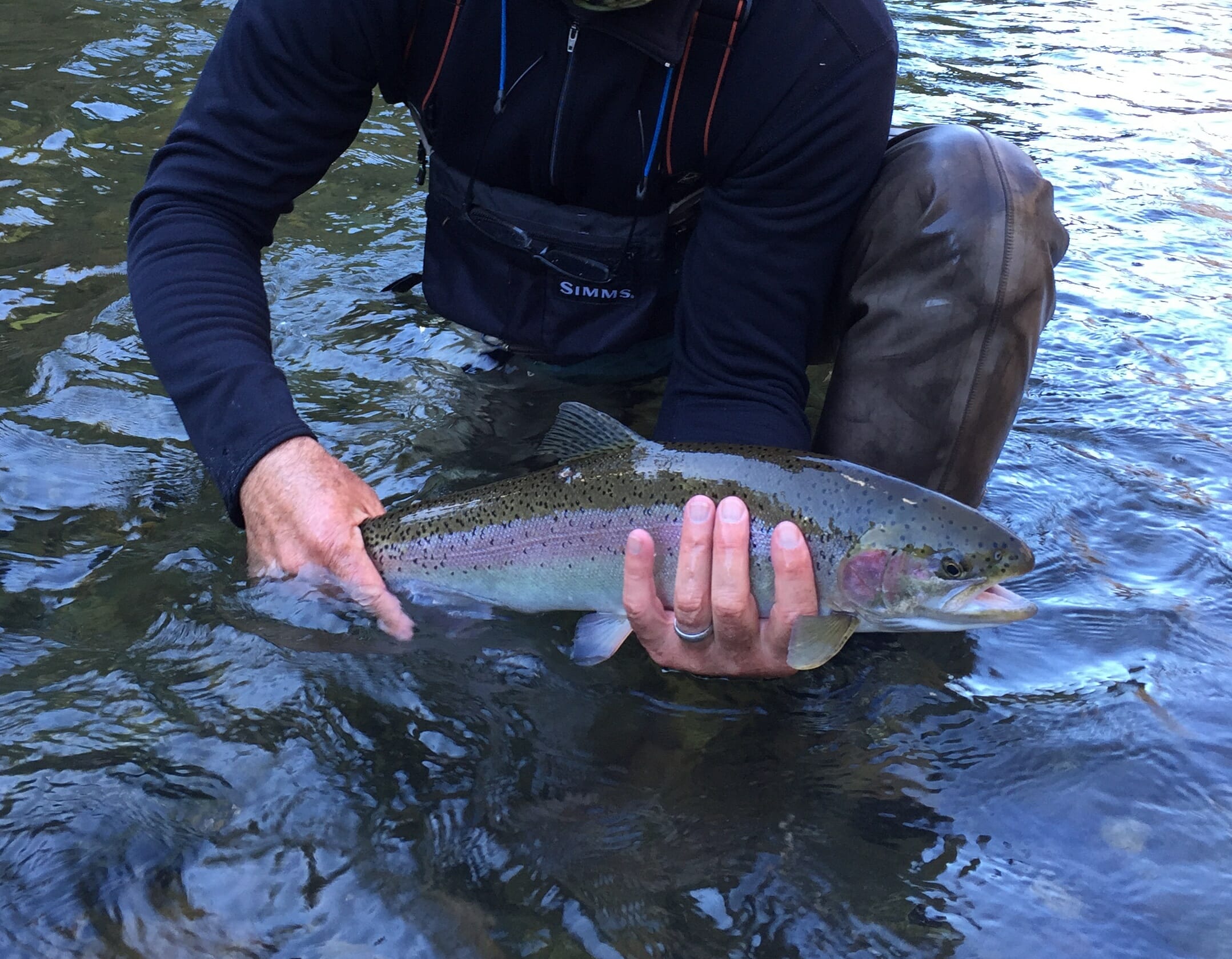The stuff of dreams, Trinity River.
By Sam Davidson
The first hints of autumn always seem to bring things into sharper relief. When you have spent almost no time lately with a rod in hand, not taking advantage of the last wet-wadable days of the year, that clarity can be unwelcome.
Thank goodness for social media. At least I can salivate over the places my friends and associates are fishing, and the achingly beautiful trout they are cradling.
But after a while the worm of envy starts to wriggle out of its hole. That’s when I turn to fishing literature. Over the past few months I’ve wolfed down some very satisfying stuff.
I read McGuane’s The Longest Silence (man, he’s good). Re-read a couple of Gierach classics. Enjoyed the heck out of a collection of yarns from Stephen Sautner called Fish On, Fish Off (highly humorous and highly recommended).
And I re-discovered the pleasure of reading Ernest Hemingway, through a compilation of stories and snippets edited by Nick Lyons called Hemingway on Fishing.
This anthology is tailor-made for those of us who’ve been spending more time dreaming about fishing than actually doing it. That’s because the stories and travelogues in it evoke not only the visceral experience of fishing but also the redemptive power of the places we fish.
Plus, the book is wrapped around an assemblage of compelling photographs, mainly from the 1920s and 30s, that affected me much like steelhead fishing: a blast of euphoria upon feeling the tug, and equally potent deflation when the fish throws a massive air-hack and comes unbuttoned.
I mean, how likely in today’s world is any one angler likely to hoist that many giant marlin, tarpon and trout in a lifetime?

Ernest Hemingway as a young angler (note the cane pole). From the book Hemingway on Fishing, Lyons Press, 2000.
One story in particular among this fine collection got me thinking. It’s called Now I lay Me, and it’s really, at its core, not about fishing.
In this tale Hemingway’s famous character Nick Adams is lying in his Army-issue blankets on a bed of straw a few miles from the front lines in Italy during the First World War. The war has been hard on him and now he is afraid his soul will depart his body, for good, if he goes to sleep.
To keep himself from drifting off, he thinks about trout streams he has fished. And he re-fishes them, every pool and riffle, in his mind.
As the span of days with no line in the water lengthens, I have taken to mind-fishing, too. Not because I’m worried about my soul eloping with a better body (though that action might be justified). It’s more a desperate ploy to stay in the game.
It’s not limited to those moments in bed before Morpheus takes hold. I’ll mind-fish during my lunch hour. Heck, I’ll mind-fish while I’m on conference calls.
In this way I have fished some classic trout waters, all with special meaning for me. As I followed the progress of the recent Carr Fire, for example, which burned homes and dreams of fishing mates in Redding and stormed over the hill toward Lewiston and the upper Trinity River before being turned back by doughty firefighters, I began mind-fishing the Trinity almost daily.
On this legendary river I revisited runs both familiar and obscure, where in years past I have dropped to my knees, more spent than the classic Trinity 6-pounder shimmying back into the current with a swipe of its muscular tail.
In this same fashion I also have fished waters further away in time and space.
As a kid we camped in musty canvas tents in a sweet glade among the cottonwoods next to a cobble bar on Idaho’s Big Wood River. My brother and I drowned worms and salmon eggs in the obvious buckets and caught brook and rainbow trout every morning and evening, my mother rolling them in corn meal and frying them in butter.
I have been mind-fishing those holes with my brother again, along with the ranch manager, Harold, who like Hemingway used fly fishing gear but mostly corn, cheese, and grasshoppers instead of flies, as he drifted his rig through water we never thought to cast into and nailed the big trout we never tempted.

Combat fishing at the mouth of the Carmel River, 1960s.
But mostly I have been mind-fishing the river I grew up on, the Carmel, a typical central California coastal stream, which is to say, few anglers would have been interested in the Carmel back then, and fewer would be interested now, if not for its run of wild steelhead.
This run has been reduced from a few thousand to a few dozen adult returns, in a good year. But the watershed remains among the most important for steelhead for a hundred miles in any direction and has been the focus of intensive restoration efforts.
Maybe my having some involvement with those efforts is part of the reason why I have been mind-fishing all the spots to which my brother and I dragged our oversize tackle box when we were growing up. The productive run behind the Little League ballfield. The undercut bank on the old Morse Ranch where we often gave up on trout and, replacing salmon eggs with bacon fat, plucked as many crawdads as we could carry.
But mostly I have been mind-fishing the spot some called the Quarry Hole, upstream of the bridge at Robinson Canyon.
Steelhead would hold in this run and when we were kids it was combat fishing there every winter weekend, or when the river would clear. All these years later I am still throwing and twitch-retrieving a red and white Daredevil spinner across this water, trying not to get stepped on by gruff men in plaid wool shirts and hip waders, reliving the day my brother hooked up fairly to a giant steelhead here and actually landed it, with the help of a couple of gentlemen who, by their unselfish intervention, more firmly hooked two kids on fishing.
Life’s been barking out marching orders rather than offering choices lately. But it’s okay. Like Nick Adams, I have been keeping myself anchored by fishing streams I’ve known well enough to love—without actually wetting a line.
Sam Davidson is TU’s communications director for California and Oregon.



